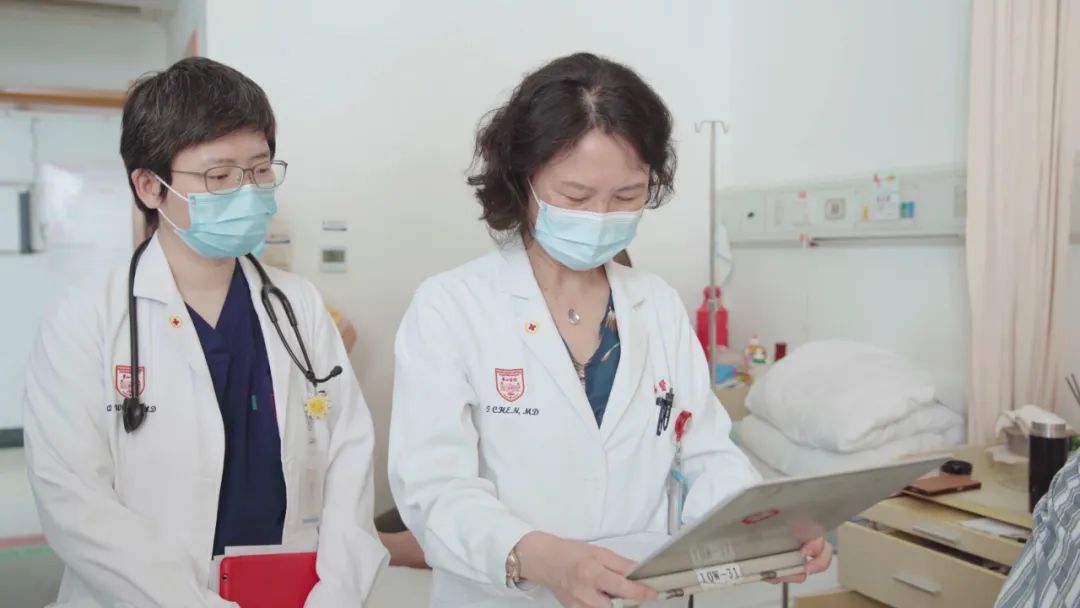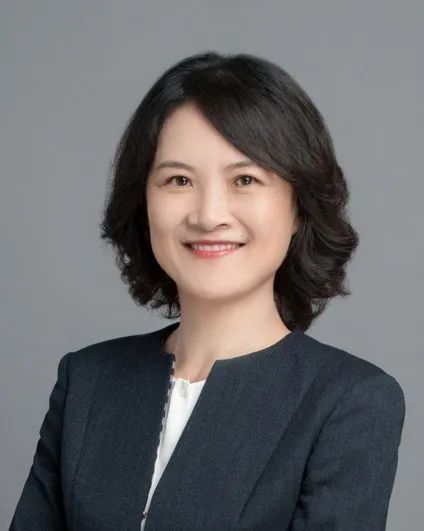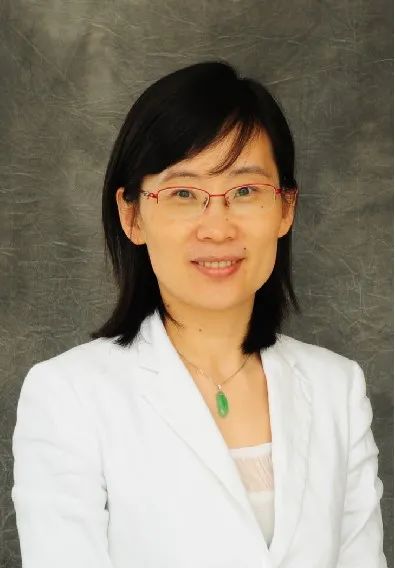What kind of vision and belief do I need to solve the case of rare difficulty?
Author:Medical community Time:2022.08.27
For medical professionals for reading reference

The key to diagnosis and treatment of rare diseases is to "think of", the department must "open", and it is expensive to insist in a love.
Not long ago, we listened to the medical voice of the three rare disease diagnosis and treatment experts affiliated to Huashan Hospital affiliated to Fudan University, and felt their enthusiasm and concentration of the rare disease diagnosis and treatment, and the consideration and respect for patients with rare diseases. Today, we continue to share the true feelings of the two Huashan Hospital experts.
In the face of rare cases, what kind of "puzzle solution" did they go? What kind of urgency and sincerity are the advice and sincerity to patients, to the public? Welcome to read this period and continue to pay attention to the "Medical Heart Language" column of the rare disease channel in the medical community, listen to the tender "doctor's order", and feel the benevolent heart.
Making rare blood tumors is no longer "blood suspicion",
Still need to work hard
■ Vice Dean and Director of the Clinical Research Center of Huashan Hospital Medical Research Institute affiliated to Fudan University
Professor Chen Tong, Director of Hematology Department of Huashan Hospital affiliated to Fudan University
Doctors in the field of hematoma have been clinically experienced in the past ten years. I believe everyone is becoming more and more gratifying: targeted drugs have emerged more and more, and some common difficult to cure blood tumors have specific treatment plans Essence If our field of diagnosis and treatment in this field for many years is "guarding the clouds and seeing the moon", then the most worrying "black clouds" are now the rare hemorride tumors.
This kind of disease may not be medical. For example, the POMES syndrome in the national "The First Batch of Rare Diseases", a rare plasmal cell disease, can use existing medicinal drugs, including protease inhibitors, immune regulators, etc. Essence But for patients who encounter this disease, they still face many challenges: one is that it is easy to be misdiagnosed in the early stage, and the other is that medical insurance coverage may not be comprehensive enough. This is also the two major pain points that rare diseases often encounter.

Professor Chen Tong at work (right)
For diagnosis, the typical symptom of POMES syndrome is chronic peripheral neuropathy, and both lower limbs are more common. Therefore, patients are easily misdiagnosed as neurotrophic diseases such as multiple sclerosis. In fact, if it is accompanied by symptoms such as hepatoplasty, general edema, and ascites, you must consider rare pulp cell tumors.
Therefore, I often say that the key to the diagnosis and treatment of rare diseases is to "think of." Unexpectedly, it is possible to let the patient take a lot of detours. Thinking of it, the seemingly unsolved dilemma may only need to break through a layer of window paper. After the diagnosis, the treatment plan is clear and effective.
With this keen insight and broad vision, it is inseparable from the accumulation of many years of clinical experience. We have a saying, "In Huashan Hospital, rare diseases are not uncommon." This confidence is based on the accumulation of a large number of rare patients for decades, and gradually explores multidisciplinary disciplines suitable for rare disease diagnosis and treatment Collaborative MDT mode.
Neurology and our blood department have achieved "opening". There are often patients who have traveled to multiple hospitals before. After they came to Huashan Hospital's Neurology Department, colleagues found that they were more in line with the disease representation of hematological tumors. Caused by paracelastoma. This is just like solving the case, finding the culprit, "the truth is white", and the patient's symptomatic treatment, gradually improved, is the most successful moment for us to be a doctor.
Not long ago, a patient who reviewed it was typical. When he turned from the Department of Neurology, he was sitting in a wheelchair. He was seriously ascites. After half a year, he could walk. The main task in the future was to prevent recurrence. Other patients, after several years of treatment, can drive to follow up, and basically restore the life before the illness.
After the establishment of the Huashan Rare Disease Center, the communication and joint diagnosis between the multi -department rooms are more convenient and smooth. The waiting room for our multi -disciplinary consultation is the starting point for many rare blood tumors to first diagnose the confidence. Seeing the patient who came to the clinic, I learned about the recovery process of these patients. Rare blood tumors challenges.

Carry out MDT consultation for patients
However, when it comes to the problem of rare diseases, as a doctor, there will still be a sense of weakness. Nowadays, multiple targeted drugs for blood tumors are within the scope of medical insurance. However, due to the rare blood diseases such as POMES syndrome, they are not in the adaptation of these targeted drugs, and patients cannot reimburse. The burden of medication is heavier.
This will directly affect some patients' medication choices. Obviously there are drugs with smaller side effects and better prognosis effects, but some patients do not use or afford to use it. At this time, it is our most heartache moment. In recent years, I have repeatedly called for targeted drugs in the field of hematological tumors into the scope of medical insurance. I hope to take care of rare blood tumor diseases in the payment guarantee and avoid different reimbursement benefits for reimbursement treatment.
In the 1980s and 1990s, there was a Japanese drama "Blood Suspicious" popular all over the country. After some film and television dramas, leukemia was also a frequent visitor. The protagonist was helpless as soon as he got it, making the public feel that leukemia was terrible. In fact, some common hematological tumors have already cured medicines and preserved medicines, and they are no longer "terminally ill". In the field of rare blood tumors, we are also confident that they are no longer "blood suspicion", but we are clinically. In addition to treatment, there are many tasks waiting for the forces of all parties to complete.
From grass -roots doctors, scientific researchers to the government, and all sectors of society, we look forward to "seeing" rare diseases first, "think" related rare diseases in the diagnosis and treatment, and "remember" such a group of patients with sighing medicines in the guarantee. The hope of this common blood disease patients believes that the majority of patients with rare diseases will definitely lead to such a future. Ask rare:
There is always a good way to keep us in love
■ Professor Ye Hongying, Deputy Director of the Department of Endocrinology, Fudan University
Usually, I like to watch some celebrity biography and lecture programs. From those famous artists in the long history, to a speaker who is ordinary and sincere, and the eyes are shining on the stage. Into the state of my mind, insist on love, instead of becoming a person, but to enjoy the process of pursuing a beautiful process.
When the doctor talks about his career, you may "want to say that it is not easy to love you", and hard work and busy are the keywords that cannot be avoided; I am very pleased that I can continue to maintain the original love. As an endocrinologist who often deal with rare diseases, whether it is the diagnosis of the cause, the treatment process of the dawn to the patient, and even the challenges that must be faced in the meantime. Know it.
Professor Ye Hongying

The complex and difficult to cure cases of rare cases often originate from elusive causes. In the Department of Endocrinology, we often encounter patients who have been seeking for many years. The first task is to clearly diagnose. If the case is solving the puzzle, the exact cause is generally found, and the cause of the treatment allows the patient to recover. This process is naturally a beautiful moment for clinicians to collect.
In 2014, when a young man came to the consultation, he had been tortured after eight years and stayed in more than 20 hospitals. U.S., he has a full moon face, buffalo back, purple pattern, and obese obesity. These characteristics are not difficult to judge -as early as the early stage of the onset, he was diagnosed with Ku Xin syndrome at the local hospital. But he has undergone two operations of pituitary and adrenal glands, and his condition has not been relieved.
At Huashan Hospital, we conducted a layer of inspection and judgment on him, and finally found a "culprit" that was extremely deep: there was a tumor less than one centimeter in the lungs. His illness can be described as rare -the abnormal ACTH syndrome, which is neither the Ku Xin syndrome with neither pituitary gland nor adrenal glands. After using a simple thoracoscopy to remove the tumor, he healed!
The young man is excited, so he must not say. His healing also brings us a great sense of accomplishment. We are not doctors who do surgical removal of tumors, but we told the surgeon where the cause is. While gaining joy, I also remind myself that the diagnosis of diseases, especially rare diseases, is precisely the ability to test the doctor's carefulness and see micro -knowledge. As a clinician, the growth in this area is endless.
Over the years, the advancement of rare disease diagnosis and treatment can especially present the rapid development of medical level and medical system: from the consultation of a single department to providing treatment plans for multidisciplinary collaboration; from the physiological level diagnosis and treatment to the full recovery of the patient's physical and mental body and mind Essence
Sevilia

For example, in congenital adrenal cortex hyperplasia (CAH), one of the consequences of some of its typing is abnormalities. The follow -up problems involved include the patient's self -gender cognition, psychological state, social integration, etc. Support system.
Twenty years ago, we had a patient about 30 years old who originally went to the urology to do the resection of adrenal tumors. The doctor of the surgeon found that "she" had no second sexual character, as well as hypertension and hypotonia. Please consultation. After further inspection of endocrine, she found that she was a rare 17α-hydroxylase deficiency in CAH. The chromosome nucleus was 46 xy. The physiological gender was a male.
I still remember the shocking expression when the patient learned of this result, and I also remember my confusion and helplessness at that time. After the medication, the patient's hypertension and hypotonic potassium quickly returned to normal, but in the next step, I do n’t know who to introduce the patient to to help “she” complete the gender choice, psychological recovery, and take the future path of life.
Last year we took another CAH patient. The situation was similar. It was about 15 years old. It was also a hypertension hypotonal potassium with primary and amenorrhea. The chromosome nucleus was also 46 xy. Essence But at this time, we are already a member of the related treatment team. We treated with drugs to control her hypertension and hypotonic potassium, and conducted long -term follow -up. In response to her decision to choose the gender of society for women, the other members of the team will perform a series of surgery for her to ensure her happy life of a girl to the greatest extent.
In addition to solving problems for patients, I often think about it. I was fortunate to be on a platform such as Huashan Hospital. After diagnosis and treatment of a large number of rare cases, what else can we do. Personal power and even the power of a hospital are limited to the diagnosis and treatment of rare cases. Improving the recognition and diagnosis and treatment ability of rare diseases is the most effective and basic is to share our experience.
Recently, we have sorted out rare cases that have been diagnosed and treated in the past ten years. I am very satisfied with the writing method of this book: not only wrote the summary of the patient history, but also recorded the process of thinking and analysis of the diagnosis, that is, "how do we think of it." Patient's characteristics may be hypertension and diabetes. So how do we contact rare diseases? How to finally diagnose? We have gradually recorded it for your reference, and then consult the relevant literature to summarize it to help readers have a lively and comprehensive understanding of this rare disease. Previously, I also wrote a book about pituitary dysfunction. Speaking of which we want to praise our cute patients, this was originally written for doctors for reference, but some patients would buy it. The first time I saw the patient who took this book to see the outpatient clinic, I was very shocked and made me deeply admire. I also thought that in addition to the science of diabetes, should I write a book for the patient? Disease book?
Discovering the beauty in work and life, insisting on asking the mystery of life, never giving up lightly, is my time I told me at my moment, and it is also my hopes for the patient group. Taking this opportunity, I especially want to say the rare disease patients who have not been diagnosed with a clear diagnosis, and those patients with a long diagnosis but have a long path of treatment, do not give up, do not give up, believe that we are dedicated to the diagnosis and treatment of rare disease diagnosis and treatment, and have been Be with you, to work hard.
Expert Introduction
Professor Chen Tong
Chief physician, doctoral supervisor

Deputy Dean and Director of the Clinical Research Center of Huashan Hospital Medical Research Institute affiliated to Fudan University
Director of Hematology Department of Huashan Hospital affiliated to Fudan University
Member of the Chinese Medical Association Hematology Medicine Branch
Vice President of the Blood Physician Branch of the Shanghai Medical Association
Member of the Hematology Branch of the Shanghai Medical Association
Member of the Shanghai Immunization Society Hematology Branch
Shanghai Medical Leading Talent
Shanghai Outstanding Academic Leader
Outstanding Talent of the Ministry of Education New Century
Shanghai Pujiang Talent
Good at diagnosis and treatment of malignant tumors such as acute chronic leukemia, lymphoma, osteoma and other blood systems
Introduction to lymphatic cell disease MDT clinic:
"MDT" of Huashan Hospital "lymphocytosis MDT" was founded in early 2018. It is a multidisciplinary clinical academic team composed of specialist experts composed of specialist experts such as hematology, neurology, nephrology, video department, digestive, and infection department. The diagnosis and treatment of various diseases caused by abnormal diseases caused by lymph/pulp cells and related pathways focuses on the damage to important organs of abnormal lymph/pulp cells, covering lymphoma, multiple osteoma, heavy chain diseases, light chain diseases, difficulty cure Sexual severe muscle weakness, POEMS syndrome, starch samples, refractory optic neuropitis spectral diseases, M protein ledis -related neuromusata and other common and rare diseases. Integrate the characteristics and advantages of the above -mentioned experts, and provide patients with standardized and individualized comprehensive diagnosis and treatment suggestions through multi -disciplinary cooperation, and strive to clearly diagnose early diagnosis and guide treatment.
Professor Ye Hongying
Deputy Director and Master of the Department of Endocrinology of Huashan Hospital affiliated to Fudan University

Pyramology Group of the Endocrine Branch of the Chinese Medical Association
Member of the Shanghai Medical Association Diabetes Branch
Member of the Pyramutic Anti -Men of the China Rare Disease Alliance
Member of the Shanghai Medical Association Endocrinology Metabolism Medicine Branch
Member of the Chinese pituitary tumor association
Deputy Chairman of the Commission for Infertility Experts Committee of Shanghai Traditional Chinese and Western Medicine Society
Member of Shanghai Traditional Chinese and Western Medicine Society Diabetes Specialty Committee
Standing Committee of the Professional Committee of Diabetes Prevention and Rehabilitation of China Rehabilitation Medical Association
Editor -in -chief "Selection of Hualshan Hospital's pituitary Difficult Diseases Multi -disciplinary diagnosis and treatment cases"
Clinical and basic research focuses on nerve endocrine and obesity
Source: Rare Disease Channel in the medical community
Organize this article: Mufeng
Review of this article:
Professor Chen Tong, Department of Hematology, Huashan Hospital affiliated to Fudan University
Professor Ye Hongying, Department of Endocrine Department of Huashan Hospital affiliated to Fudan University
Editor -in -chief: Bi Beibei
not
Hot text recommendation
- END -
From 9:00 to 21:00 on August 12, 27 newly positive infections were added in Jinhua Yiwu City, 18 of which were discovered by centralized isolation, and 9 cases were community screening (including home isolation).
From 9:00 to 21:00 on August 12, Jinhua Yiwu City reported 27 newly sieve positive personnel, which were positive after review, and 18 of them were discovered by centralized isolation. DetailReporting
Summer tone, agreed on Sanfu post, the three -volt -day moxibustion of the recovery medical department of the first hospital of the city is opened

2022 Sanfu Tian Moxibustion TimeQuoting: July 6 (Wednesday)Chu Fu: July 16 (Saturd...